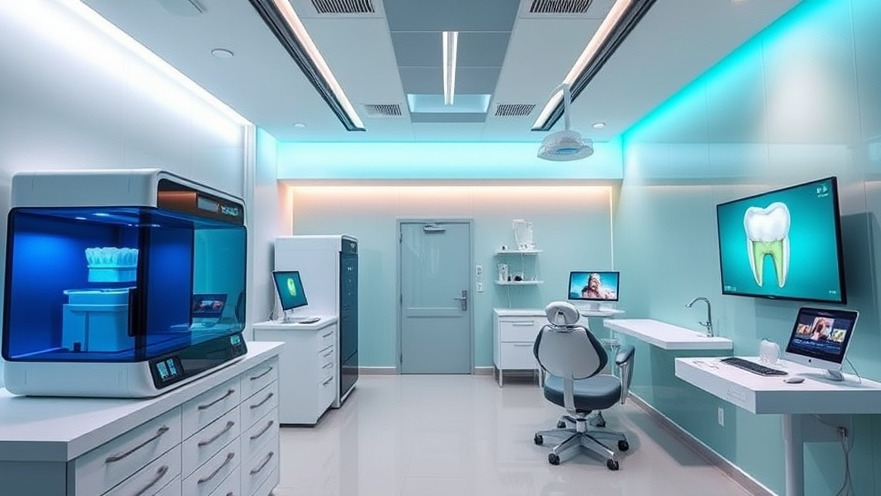
The Digital Transformation in Dentistry: A Paradigm Shift
The dental industry is undergoing a profound transformation as digital technologies become increasingly integral to practice. While over half of U.S. dentists are now using intraoral scanners, the adoption of additional technologies like 3D printing and milling machines remains markedly lower. This disparity prompts a critical examination: are digital tools indispensable assets or mere novelties for dental practitioners?
Understanding Adoption Rates and Trends
The statistics paint a clear picture: 53% of U.S. dentists report utilizing intraoral scanners, yet only 17% have integrated 3D printing into their workflows. This limited uptake raises significant questions regarding the barriers to broader adoption. Economic concerns, lack of training, and skepticism towards new technologies often dissuade much of the dental community from embracing digital solutions.
Key Benefits of Digital Dentistry
The advantages for those who have embraced digital technologies are compelling. Improved clinical efficiency is a paramount benefit, with 70% of practitioners noting enhancements in productivity. Additionally, patient preferences are shifting; approximately two-thirds of patients express willingness to change their dentist for the prospect of single-visit dentistry. Such demands underline the need for practitioners to reconsider their operational strategies in light of technological advancements.
Patient-Centric Innovations: The Role of Digital Smile Design
The rise of Digital Smile Design (DSD) software illustrates the demand for personalized, aesthetically-focused dental care. The DSD market is projected to nearly double from $151.1 million in 2025 to $281.8 million by 2033, indicating a growing trend toward patient-centered innovations in dentistry. Personalization in treatment plans can significantly enhance the patient experience and satisfaction levels, thereby fostering long-term relationships between practitioners and their clients.
Examining the Economic Implications of Digital Adoption
Economic factors undoubtedly influence the decision-making process within dental practices. The initial investment costs for technology like 3D printers and milling machines often deter practitioners from pursuing a digital transition. However, the long-term return on investment should not be underestimated. Practices that leverage digital workflows typically report faster turnaround times, reduced lab costs, and improved workflow efficiencies that translate into enhanced profitability.
Cultural Shifts and the Future of Dental Practice
As digital dentistry evolves, so too does the cultural landscape surrounding it. The shift toward digital solutions is not merely about adopting new technologies; it reflects a broader trend towards innovation and modernity within the healthcare sector. For practitioners resistant to change, understanding the cultural significance of these advancements may help facilitate a more proactive embrace of digital tools.
Counterarguments: The Case for Analog Methods
Despite the numerous benefits associated with digital dentistry, there remains a strong case for analog methods. Some practitioners argue that traditional approaches offer reliability and familiarity that digital techniques may lack, particularly in certain clinical situations. Skeptics also caution against over-reliance on technology, emphasizing the importance of maintaining a human touch in patient care. These opinions highlight the need for a balanced approach, recognizing that both digital and analog methods have their place within the vast spectrum of dental care.
Conclusion: Moving Towards a Digital Future in Dentistry
As the dental profession continues to navigate this transition, understanding the nuances of digital versus analog workflows will be vital for practitioners hoping to optimize their practice. The potential for digital technologies to enhance efficiency, improve patient satisfaction, and ultimately increase profitability is substantial. By facilitating a more informed dialogue around these innovations, practitioners can shape a future that balances tradition with modernity in dental care.
 Add Row
Add Row  Add
Add 




Write A Comment